The Sinnock Site
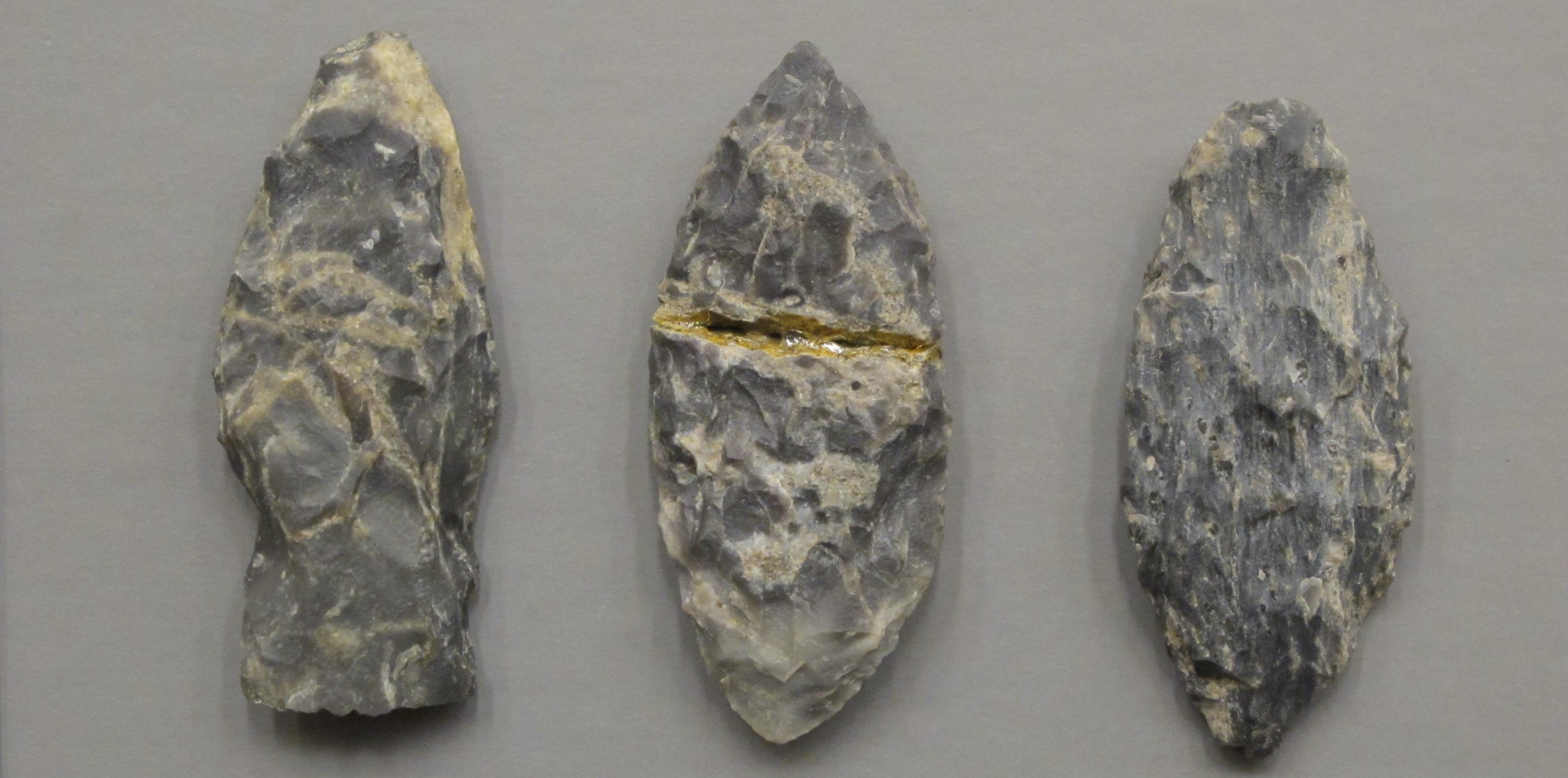
The shores of the Winnipeg River are dotted with archaeological sites. Many of these sites have been significantly impacted by hydroelectric development on the river. This often means that archaeologists have to wait for "low-water"years to visit and explore these sites.
In 1979, Manitoba Hydro announced a program of repairs to the Seven Sisters and Great Falls dams, which would require three years of lowered water levels in the dam forebays. This presented archaeologists with a rare opportunity to investigate shoreline archaeological sites in those areas. In 1980 and 1982, a team of archaeologists, including students from the University of Winnipeg, surveyed and excavated a very ancient archaeological site exposed by the low water, the Sinnock site.
The Sinnock site lies on the eastern shore of the Winnipeg River, about two kilometers southeast of the town of Great Falls, MB. The Sinnock site is important to archaeologists in Manitoba because of its significant age, and because it’s what archaeologists refer to as a ‘single component site’. That means it was only used by one group of people over a relatively short time. Single component sites give archaeologists a snapshot of what life was like for the group of people who used them. Based on the style of artifacts found and radiocarbon dated bones, the Sinnock site tells us about life in Manitoba about 9000 years ago.
Back then, the Winnipeg River region was a very different place than it is today. Nine thousand years ago, neighbouring areas of central Manitoba and northern Ontario were covered by the large glacial Lakes Agassiz and Ojibway. To the north of the lakes, the land was still blanketed by the receding Laurentide Ice Sheet. While it can be difficult to tell exactly what the environment in the Winnipeg River area was so long ago, evidence from lake sediments suggests that much of North America was experiencing warmer than usual weather at this time. As the glaciers and lakes receded, tundra-like vegetation would have been quickly replaced by stands of spruce forest that gradually gave way to the mixed woodlands we see in the region today.
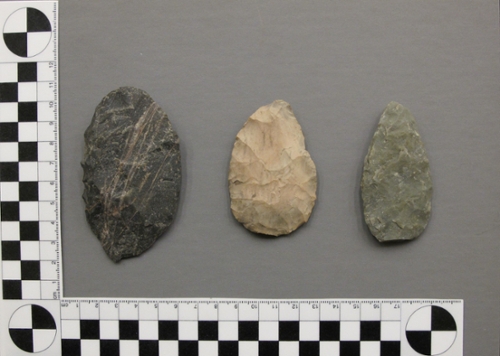
During their excavations at the Sinnock site, archaeologists were able to identify a number of different ‘activity areas’. Activity areas are locations within an archaeological site where the artifacts found strongly suggest people were focused on a specific activity. One of the activity areas at the Sinnock site is located on the site’s upper terrace away from the river’s edge. In this area, archaeologists found many stone tools (like those pictured to the left) as well as the waste flakes of stone produced by making them, called ‘debitage’. It’s highly likely that people used this part of the site to make and repair their tools.
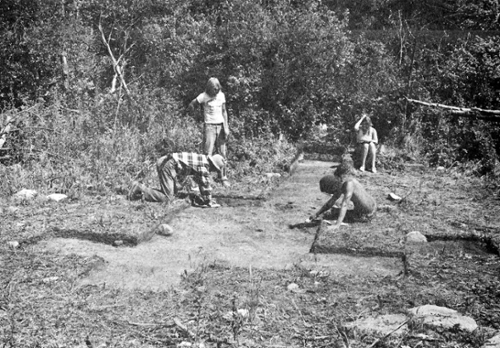
One of the other activity areas at the Sinnock site, located closer to the shoreline, is a hide-working area (pictured in the photo above). Artifacts found in this part of the site include stone tools like hide scrapers (like those in the picture below), hide-rubbing stones, and abraders that would have been used to make animal skins into furs and leather that could be used for clothing, bedding, shelter, and storage.
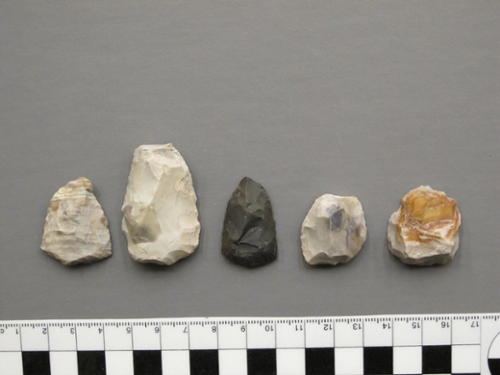
Wood from 9000 years ago is not preserved at the Sinnock site. However, tools found at the site tell archaeologists that the people who lived there were skilled woodworkers. These tools include spokeshaves for shaping tool shafts, small serrated stone blades, adzes, and other heavy chopping tools.
In the centre of the Sinnock site, archaeologists found a stone windbreak next to the remains of a small fireplace or hearth (see photo below). An area of soil near the hearth was found to be rich in organic material, probably because of people throwing out food waste. When archaeologists find shelter, fire, and food in the same place, it’s a pretty strong indicator that someone used to live there. So, the centre of the Sinnock site is probably where people built their homes 9000 years ago.
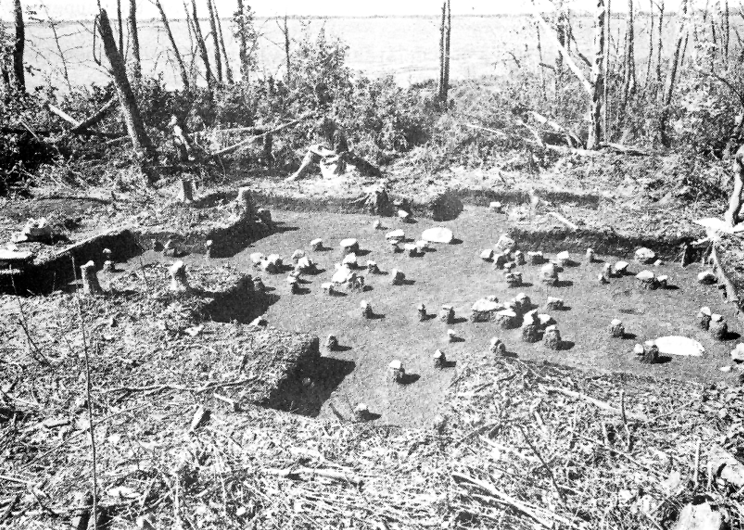
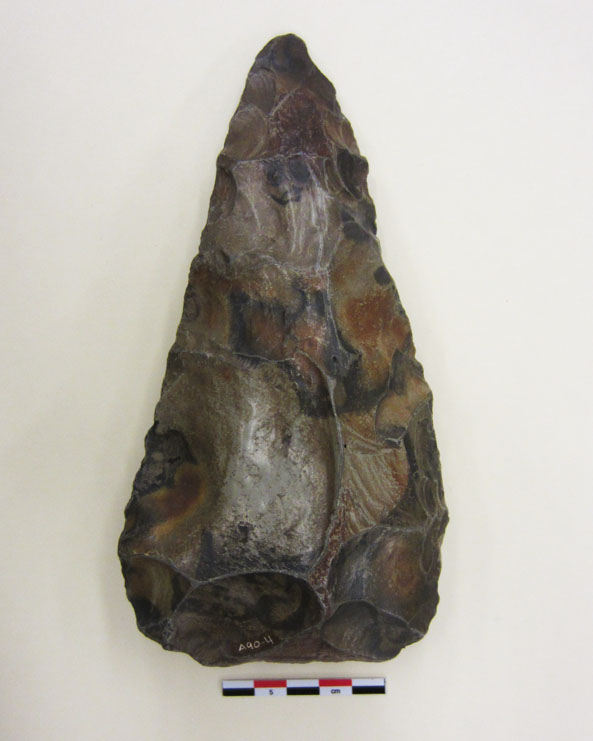 The last activity area found at the Sinnock site gives us a special glimpse into how sophisticated ancient technology was. Rather than being defined by artifacts, this activity area consists of a concentration of fine carbon, sand, and clay. Mixed in with these materials, archaeologists found a few flakes of stone, flecks of ochre, and shattered, scorched limestone cobbles with bits of chert still lodged in them. Chert is a stone that’s mostly made up of microscopic grains of quartz. Because it tends to break in a predictable way and form sharp edges when hit, chert was used by people around the world for making stone tools. The stone tool in the picture to the left isn't from the Sinnock site, but it's a great example of a tool made from chert.
The last activity area found at the Sinnock site gives us a special glimpse into how sophisticated ancient technology was. Rather than being defined by artifacts, this activity area consists of a concentration of fine carbon, sand, and clay. Mixed in with these materials, archaeologists found a few flakes of stone, flecks of ochre, and shattered, scorched limestone cobbles with bits of chert still lodged in them. Chert is a stone that’s mostly made up of microscopic grains of quartz. Because it tends to break in a predictable way and form sharp edges when hit, chert was used by people around the world for making stone tools. The stone tool in the picture to the left isn't from the Sinnock site, but it's a great example of a tool made from chert.
Another interesting property of chert is that, when heated, it changes colour, becomes glossy, and is easier to make into tools. Together, the carbon, sand, stone flakes, and limestone are evidence that people dug at pit in this part of the site, built a fire inside, and packed stones and sand around it as a way to heat-treat the stone before making tools out of it. Archaeologists call this an ‘annealing pit’.
The activity areas found at the Sinnock site are a good example of why archaeologists dig so carefully and record exactly where they find every artifact. Without knowing exactly where the artifacts from the Sinnock site were dug up, we wouldn't’t have nearly as much insight into what life was like for the people living there 9000 years ago. Even so, there are still some things we don’t know. For example, because of the site’s age, none of the bone or wood tools made and used by the people living there survived.

While we do call the Sinnock site a single component site because the overwhelming majority of artifacts were deposited over a short time, there are also a few artifacts found that suggest somebody made a quick trip there around 100 years ago. A Mercury-head dime found at the site tells us that whoever dropped it, along with a bottle, and some other relatively modern garbage, did so sometime after 1917.
